To extend your roof’s lifespan, we strongly recommend an annual inspection done by professionals.
Roof inspection : the warning signs
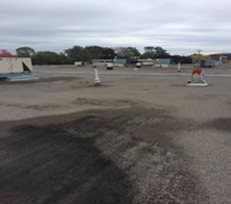
The membrane must be protected with a sufficient and uniform layer of gravel. Without this protective layer, membrane degradation occurs very quickly. Gravel has three main functions on roofs :
- Wind resistant
- Protects the roof from ultraviolet (UV) rays
- Protects the membrane from freezing temperatures and heavy snow. It slows down the effects of sudden cooling.
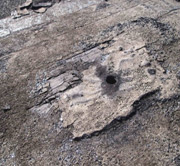
Commonly known as alligator skin, multiple surface cracks happen as a result of bitumen degradation. When the gravel protection is not optimal, the ultraviolet rays attack the bitumen. This can happen if the gravel moved on the roof over time or if there was an insufficient quantity initially. Regardless, it should be repaired eventually.

Gravel stops could be a problematic flashing type! They can often tear the multi-layered membranes in which the gravel stops are fixed. This could happen during the roof membrane contraction and expansion in winter.
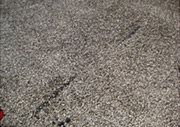
Multilayer membranes that are installed in complete adhesion on polystyrene foam insulation panels can be affected by the membrane contractions and expansion. This is due to the movements of the underlying insulation and its instability.

Swelling issues are caused by the pressure of water vapor heated by the sun or by gas fumes from waterproofing components. These blisters are a sign that the roof must be repaired soon.

The increase in acid rain has caused flashings to corrode faster. In order to prolong their lifespan, we advise repainting them frequently, as soon as they show the slightest trace of corrosion.

The ridges are wrinkles in the waterproof membrane. These wrinkles, caused by the movements of the substrate, create cracks over time and must be repaired.
SEALANTS TO KEEP OUT WATER AND MOISTURE
When spreading bitumen to seal cracks, sometimes moisture remains inside the waterproofing complex. The bitumen acts as a vapor barrier and waterproofing components can degrade over time.
ROOF FLASHINGS : THEY PREVENT WATER FROM ENTERING THE OPENINGS AND CRACKS OF A ROOF.
If, when spreading the bitumen, the existing flashings were left in place and the seal was not made with the existing membrane flashings, moisture or water can no longer escape. Water will seep between the existing membrane and the new covering.
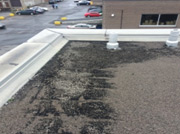
The roof membrane can lose its bitumen protection, which then exposes the roofing felts. Roofing felts are sensitive to humidity and can absorb water, which is why the roof must be repaired as soon as possible.
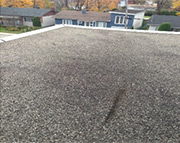
Cracks allow water to penetrate and damage the waterproofing membrane. This type of problem must be repaired immediately!
ROOF MEMBRANE SLIPPING
Wrinkles are caused by the membrane movement. It can slip due to steep slopes or an inadequate bitumen type. Repairing it is almost impossible unless the membrane is mechanically stabilized and the ties are covered with a new membrane.
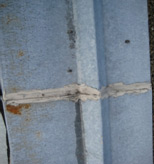
Metal flashings are used to protect the membrane where gravel cannot be installed. Therefore, there should be a membrane under the metal flashings. However, there is no need to cover the joints of the flashings with caulking, because flashings cannot resist metal contractions for more than one winter. Open joints must therefore be repaired mechanically, if the construction is compliant (presence of membrane flashing).
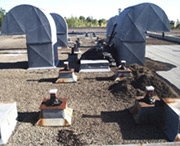
Sealing sleeves are boxes used when it is difficult to seal a pipe or an electrical conduit. It requires regular inspections, because the bituminous compound used to fill the box tends to leak under the effect of heat, and the surface quickly becomes curved.
ROOF SHRINKAGE
Shrinkage is also known as “tenting”. Single-ply PVC and EPDM membranes tend to shrink at termination. This phenomenon is explained either by material shrinkage or by an inadequate construction, or both. It is then required to perform repairs.
Annual inspections will help identify any potential problem areas and inform you of any upcoming repair or replacement needs. For this reason,Toitures PME recommends to its customers a preventive maintenance program used from the design phase.
Do you need a team of specialists to repair your roof?